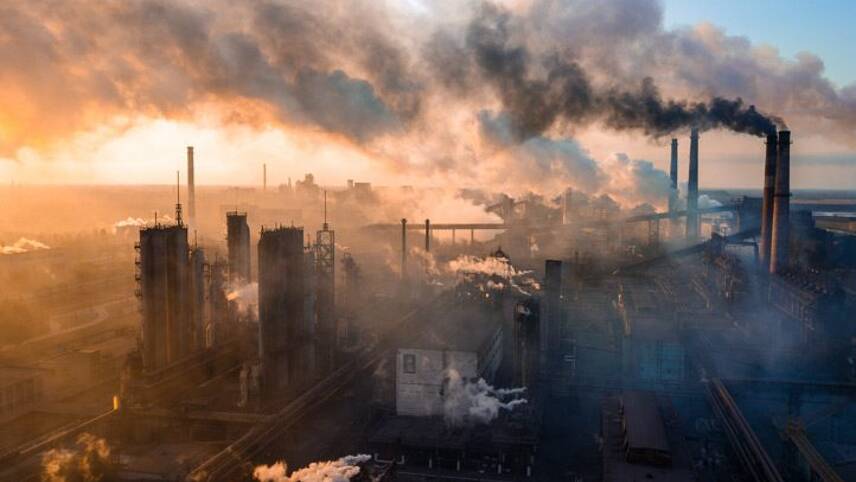Register for free and continue reading
Join our growing army of changemakers and get unlimited access to our premium content

More than eight billion allowances changed hands through European markets in 2020
Refinitiv’s annual Carbon Market Year in Review found that emissions covered by trading schemes were valued at €229bn in 2020, a figure more than five times greater than levels recorded in 2017.
The research found that much of the 20% growth came from the European Emissions Trading System (EU ETS), which accounted for nearly 90% of global value. However, even greater levels of growth are on the horizon due to the impending net-zero commitments from both the US and China.
Refinitiv’s head of carbon research Hæge Fjellheim said: “It might seem counterintuitive that in a year when emissions dropped significantly due to the pandemic, carbon prices and global market value hit new records.”
“Pandemic-induced crash and ambition-induced boom is our headline explanation. Major carbon markets saw prices and volumes rise on expected tightening of emission caps due to more ambitious climate goals in the future.”
More than eight billion allowances changed hands through European markets in 2020, a near-20% increase on 2019 levels. This happened despite an estimated 14% emissions drop in the EU ETS sectors according to Refinitiv.
In the US, the Western Climate Initiative (WCI) and Regional Greenhouse Gas Initiative (RGGI) markets followed a similar pattern to Europe. The WCI and RGGI grew by 16% from 2019, to €22bn and €1.7bn, respectively. With President Biden pledging to set a net-zero target and promote clean energy, the US carbon market is braced for a massive overhaul.
China has also pledged to deliver net-zero emissions by 2060 and the Government has drawn up plans for an emissions trading system (ETS). The plans passed legislation last week, allowing provincial governments to develop legally binding emissions caps for large power businesses.
Under the new rules, big and high-emitting businesses in the power sector can start trading emissions with each other from 1 February. Some 2,200 firms will be covered by the new system and. Each emits at least 26,000 tonnes of greenhouse gases annually.
Pilots of China’s ETS saw 98 million carbon allowances, collectively worth €272m, traded in 2019. In comparison, 78 million allowances were traded in 2018. China notably has the biggest fleet of coal power stations in the world, by number and generation capacity.
Refinitiv’s analyst for the Carbon Research China team Cathy Liao added: “China’s 2060 carbon neutrality pledge gave momentum to the preparations for a national carbon market. All the groundwork is in place for the world’s biggest emission trading system to finally see transactions, and we expect trading to start in the second quarter of 2021 at the latest.”
Last year, Refinitiv revealed that globally, turnover related to emissions trading rose 34% year-on-year in 2019 to reach €194bn (£163bn). On a global basis, it found that turnover in the carbon market in 2019 was five times greater than in 2017.
Taskforce on Scaling Voluntary Carbon Markets
In related news, a business-led taskforce has this week unveiled a new blueprint on creating a large-scale carbon trading market.
The Taskforce on Scaling Voluntary Carbon Markets was launched in September 2020 to take stock of existing voluntary offsetting schemes and identify key challenges to scaling them up while ensuring credibility and avoiding issues like double-counting.
Spearheaded by former Bank of England Governor Mark Carney, and backed by a host of private corporations, the Taskforce noted that the current market for offsets will need to grow by at least 15-fold by 2030 if the private sector is to align with the Paris Agreement’s 1.5C trajectory. By 2050, he warned, it may need to be up to 160 times bigger than in 2020, should corporates rely on offsetting rather than emissions reductions.
Mark Carney, UN Special Envoy for Climate Action and Finance, said: “Company net-zero transition plans must primarily depend on absolute emissions reductions. In parallel, a large, high-integrity market for carbon offsets is essential for three reasons. First, some companies are committed to ‘reducing’ historic emissions, which can only be accomplished through offsets. Second, in hard-to-abate sectors, all the technologies do not yet exist to decarbonise completely, so companies will need to rely on offsets to limit their emissions while they transition to new, low-emission operating models.
“Third, carbon offsets can be used to buy down the ‘green premium’ on vital emerging technologies—such as hydrogen, direct air carbon capture and sustainable fuels—to accelerate their development and adoption. In order to conserve the world’s precious carbon budget and accelerate the transition to zero absolute emissions, we need a large, transparent, verifiable and robust voluntary carbon market. The Taskforce for Scaling Voluntary Carbon Markets blueprint sets out clearly how we can build this market. It is critical that we now move from blueprint to building as quickly as possible.”
Comprising more than 50 experts from six continents, the Taskforce has this week released 20 comprehensive actions to help shape the market at a pace consistent with the needs of the Paris Agreement.
Aside from helping businesses to meet their own commitments and to align with legally binding climate targets in the markets where they operate, it is hoped that the Taskforce will play a role in boosting carbon prices. As of October 2019, the average global carbon price was just $2 per tonne.
Matt Mace


Please login or Register to leave a comment.